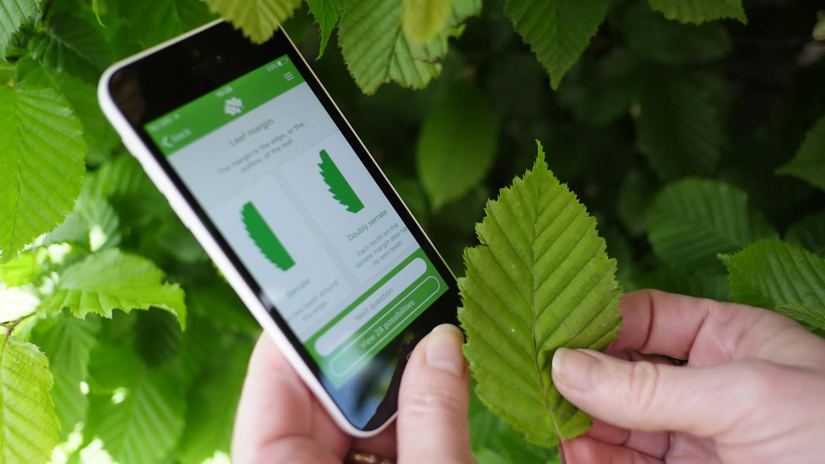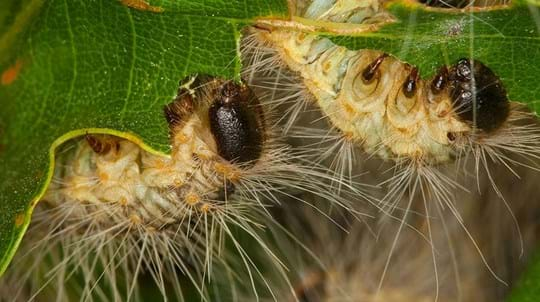
Credit: Nature Photographers Ltd / WTML
Leaves
Shiny, three-lobed and glossy, dark green leaves between 2–6cm long.
Dense and pungent, but with fruits that are enjoyed by birds and humans alike, the Midland hawthorn is a supremely useful tree whose natural range is not fully understood.
Common names: Midland hawthorn, woodland hawthorn, English hawthorn, mayflower, smooth hawthorn
Scientific name: Crataegus laevigata
Family: Rosaceae
Origin: native
A large shrub that can sometimes grow into a small tree reaching up to 8m in height, but can be taller. It provides a dense, thorny cover.
Look out for: the small lobed leaves, spiny twigs and berries (haws).
Identified in winter by: the spines that emerge from the same point as the buds; distinguishing them from blackthorn (Prunus spinosa) which has buds on the spines in winter.

Credit: Nature Photographers Ltd / WTML
Shiny, three-lobed and glossy, dark green leaves between 2–6cm long.

Credit: Mcphoto Pulwey / Alamy Stock Photo
Creamy-white, and sometimes pink or red flowers, which appear in clusters from mid-April.

Credit: Nature Photographers Ltd / WTML
Flower clusters are followed in autumn by red, oval berries called haws. The haws contain two seeds, differentiating Midland hawthorn from common hawthorn.
Common hawthorn (Crataegus monogyna). Midland hawthorn tends to flower one to two weeks earlier than common hawthorn. It has twin stigmas in the flowers and twin seeds in the haws. Midland hawthorn has shallowly lobed leaves - cut less than half way to the mid-rib. Whereas common hawthorn leaves are deeply lobed, cut more than half way to the mid-rib

Download our free Tree ID app for Android and iPhone to identify the UK's native and non-native trees. It's an A-Z tree guide in your pocket.
Download the appIt grows best in ancient woodland, shady old woodlands and hedgebanks on clay soils. It's most common in central and southern England (south of the Humber) and is fairly frequent in Leicestershire and Rutland. Midland hawthorn is uncommon in Wales, Scotland, south-west England and East Anglia.
Midland hawthorn is native to western and central Europe.

Credit: Mauritius Images Gmbh / Alamy Stock Photo
The haws provide a valuable food source for many small birds and insects, including thrushes, hawthorn shield bugs and yellowhammers. The dense thickets also provide shelter for small mammals such as wood mice and are used by birds as nesting sites.

Credit: Bob Gibbons / Alamy Stock Photo
When cut, the flowers have such a foul smell that medieval people said it reminded them of the stench of the Great Plague.
In the Middle Ages, Midland hawthorn was probably the more common of the two hawthorn species. However, as its favoured habitats are lost, they are much rarer.
The wood from the Midland hawthorn, particularly the fluted stems, is used for tool handles and walking sticks. It is often planted as hedging in wildlife gardens as its heavy thickets provide good shelter and act as effective screens.
The red haws can be used to make jellies, chutneys and wine.
Midland hawthorn can be affected by fireblight, which is a bacterial disease that kills the shoots of the plant and causes blossom to wilt and give the shrub a scorched appearance.

Shop
We have single trees and tree packs to meet your needs, from wildlife to woodfuel. Delivery is free.
External link

Trees woods and wildlife
Learn more about the pests and diseases threatening our trees. Find out how to spot them, the symptoms and outlook, and how you can help.